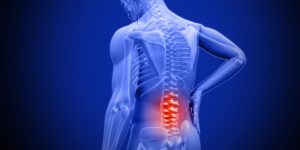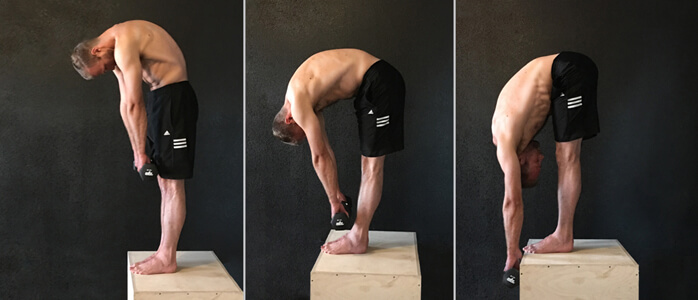10 things you should know about back pain

Nerve Flossing
January 25, 2018Recovery…
February 13, 2018 1.Back pain – the flu of the musculoskeletal system
1.Back pain – the flu of the musculoskeletal system
Back pain is about as common and normal as catching a cold is in the winter. As many as 4 out of 5 people will experience an episode of back pain during their lifetime. What isn’t common however, is not recovering from back pain. The prognosis for acute back pain is excellent and most people will report a significant improvement to their symptoms within the first two weeks, with as much as 85 % being fully recovered within three months.
2.Scans are rarely needed and might just do more harm than good
“But don’t I need an X-ray or MRI?” is often one of the first questions that pop up when someone is experiencing back pain. The truth is that research shows that scans only show something truly important in a tiny minority (less than 5%) of people with back pain. The evidence has also shown that there is a poor correlation between results found on a scan and actual pain levels. Several studies suggest that scary sounding findings like; bulging discs, degenerative changes and herniations are just as common findings in people that report no back pain at all! However being sent home with a report full of latin words and no further explanations to what this truly means, might just lead to more confusion and fear and further avoidance of movements and activity. So if you do get a scan make sure you actually get someone to properly explain you your results.
3.Back pain is not caused by something being out of place or “misaligned”
Your discs don’t go sliding around inside of you and neither does your joints. We all come with anatomical and structural differences, which can be a result of genetics, as well as natural adaptations to the different loads and movements (or lack thereof) we put our bodies through over the years. One can argue that its more “normal” to be somewhat asymmetrical than it is to be perfectly aligned, and even in the small number of people that do have some changes to their spinal alignment, studies show that this does not appear to be strongly related to back pain.
4.Bed rest and avoiding movement is not helpful
The first few days during an acute back pain, avoiding aggravating activities may help relieve pain, but this does not mean staying in bed and not moving at all. Prolonged bed rest is associated with higher levels of pain, greater disability, poorer recovery and longer absence from work. In fact it appears that the longer a person stays in bed because of back pain, the worse the pain gets. Strong evidence shows that keeping active and gradually returning to usual activities, including work and hobbies, is a huge part of aiding recovery.
5.More back pain does not equal more back damage
This might sound strange, but we now know that more pain does not always mean more damage. Ultimately, two individuals with the same injury might have completely different pain experiences. Imagine a professional violin player and a football player getting a paper cut. Chances are that that same cut is going to be a lot more painful to the violin player, who’s livelihood depends on that finger, than its going to be to the football player. The degree of pain and when we feel pain or not can vary according to a number of factors, including the situation in which the pain occurs, previous pain experiences, your mood, fears, sleep, fitness and stress levels, as well as your coping strategies. Our nervous system is the head of our pain regulation, and this system can sometimes become hypersensitive – causing a person to experience pain, even after the initial strain or sprain has healed. This can also mean that certain movements or activities might still trigger pain, although the movement wont cause any damage to the spine.
6.Surgery is rarely needed
Only a very minor proportion of people with back pain require surgery. Most people with back pain will manage and recover just as well by staying active, developing a better understanding of their pain, and by identifying and addressing factors that might trigger and drive their pain. On average, the results from spinal surgery are no better in the long-term than non-surgical interventions, such as exercise therapy.
7.The perfect sitting posture does not exist
Contrary to popular belief, no specific static sitting posture has been shown to prevent or reduce back pain. Different sitting postures suit different people, and while some might report more pain from slouching, others might do the same from sitting straight. One might go as far as claiming that there is no such thing as a bad posture – just too much time spent in one posture. Its the lack of movement and variation that kills us, not the sitting position itself! The ability to vary our posture, to get up and move around every now and then instead of staying put for hours and hours will be much more helpful to your back pain than any specific sitting posture ever will.
8.Our spine is made to move
People with back pain often believe that activities such as lifting, bending and twisting are dangerous and should be avoided. However there is no strong evidence to support a consistent association between any of these factors and back pain. So while a lifting or bending incident might have been the triggering reason for ones back pain it doesn’t mean that these activities are dangerous and should be avoided. A large variation of movements should be practiced during your recovery to help condition and strengthen your back and to leave you feeling safer and more confident in these movements in the future.
9.Poor sleep effects back pain
When someone is in pain, a good nights sleep can sometimes be hard to get. However, this works both ways as sleep problems can lead to increased pain. In the same way poor sleep can make us feel more stressed, give us a headache or make us feel tired and down, it can also cause and prolong back pain. Thus, improving your sleep routine and habits can be very helpful in reducing pain.
10.Persistent and long term back pain CAN get better
Persistent pain, where multiple treatments have been tried and failed can be both frustrating and confusing and sometimes cause people to lose hope. However this is very common as a lot of treatments will only address one factor – for example someone goes for a massage for their sore muscles, but fail to identify and address their poor sleep, high stress levels and reduced fitness level as contributing factors. We know that back pain is associated with a lot of different factors that may vary between individuals. This is why it is important to identify as many contributing factors as possible for each individual and to make a plan on how to change these to have a better shot at reducing pain and improving daily life function.
Anja.




